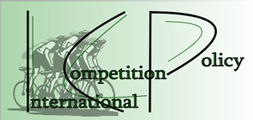Advanced Microeconomics II
Advanced Microeconomics II
(Mikroökonomik für Fortgeschrittene 2)
This course is designed for students pursuing a Master’s or PhD degree in Economics, Internationale Wirtschaft & Governance (IWG), or Philosophy & Economics (P&E). Advanced Bachelor students are also welcome to participate; for them, the course can serve as preparation for international PhD programs.
The course will operate at a highly abstract and theoretical level. Participants should therefore have:
- A strong background in Microeconomic Theory, especially Game Theory
- Solid mathematical skills
Course Format
The course is organized as a reading class. Together, the lecturer and students will study and discuss the book:
Freixas, Xavier & Rochet, Jean-Charles (2008): Microeconomics of Banking
MIT Press, 2nd Edition
Credits
The course Advanced Microeconomics II awards 6 ECTS credits, allocated as follows:
- Economics M.Sc.: Mikroökonomik für Fortgeschrittene II
- IWG M.A.: Theorie und Empirie der Geld- und Währungspolitik or Probleme der Wettbewerbs- und Wirtschaftspolitik
- P&E M.A.: Modul C2 – Economics Electives
Assessment
Graded performance will be based on:
1. Presentations & Class Participation
- Active participation is essential.
- Each student will present at least two chapters.
- Attendance rule:
1 absence per semester is allowed without excuse
2 unexcused absences = no credit
2. Short Term Paper
- Length: 7–8 pages (A4, standard margins, 12pt font, max. 1.5 line spacing)
- Content:
- Short introduction motivating the topic
- Detailed presentation of one model
- Mathematical derivations may be placed in an appendix (not counted in the page limit)
- Choice of model:
a. A model from Freixas & Rochet not discussed in class
b. A related model from a journal publication
c. A model based on the student’s own idea
- Simplifications and functional assumptions are allowed if they clarify the argument
- Deadline: February 28, 2026
- Submission: As a PDF file uploaded to the eLearning folder
Course Description: Advanced Microeconomics II (Lecture 2 SWS + Exercise 1 SWS)
The course “Advanced Microeconomics II” focuses on the Microeconomics of Banking. We begin by defining what banks are and exploring how their activities differ from those of other economic agents. A central question is why a traditional Arrow–Debreu general equilibrium model leaves no room for a banking sector.
From there, we examine the role of banks as financial intermediaries, including:
- Transaction costs
- Coalitions of depositors and borrowers
- The choice between market and bank debt
- Monitoring and its importance
- Issues of moral hazard in credit markets
A significant component of the course applies the industrial organization approach to banking. In this section, we analyze how competition between banks influences their behavior and, more broadly, the efficiency of the banking sector.
Course outline
1. Introduction
a. What is a bank, and what do banks do?
b. Banking in the Arrow-Debreu model
2. The role of financial intermediation
a. Transaction costs
b. Coalitions of depositors
c. Coalitions of borrowers
d. The choice between market debt and bank debt
3. The industrial organization approach to banking
a. A perfectly competitive banking sector
b. A monopolistic bank (Monti-Klein model)
c. Monopolistic competition
d. Beyond price competition
e. Relationship banking
f. Two-sided markets
4. The lender-borrower relationship
a. Costly state verification
b. Incentives to repay
c. Moral hazard
d.Incomplete contracts
5. Credit market equilibrium and macroeconomic implications
Textbooks and further readings
- Freixas, X. and J.-C. Rochet: “Microeconomics of Banking”, MIT Press 2008.
- Allen, F. and D. Gale: “Comparing Financial Systems”, MIT Press, 2001.
- Tirole, J.: “The Theory of Corporate Finance”, Princeton University Press, 2006.

